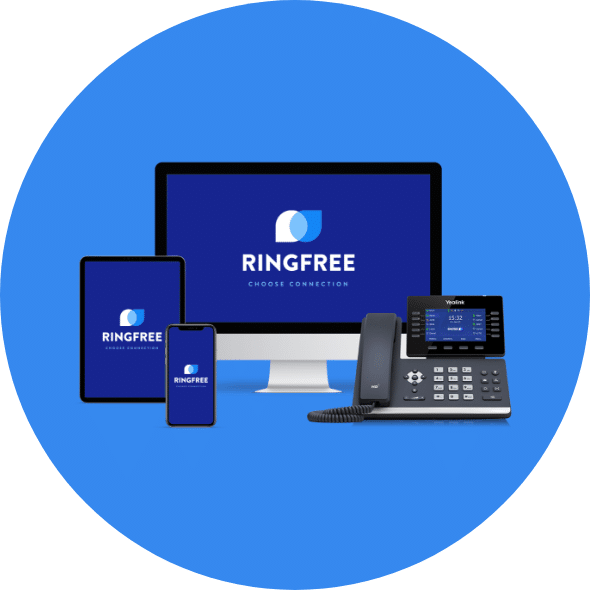Data is the lifeblood of call centers. Every call, hold time, and customer interaction is tracked, measured and then analyzed. Additionally, you track how many issues get resolved and whether the customers are satisfied with the service. This analysis helps identify what’s working and what needs to change. But the harsh fact is just analyzing the numbers isn’t enough and won’t help.
For example, if your team is finishing calls quickly, that might seem good, but are they rushing and leaving customers frustrated? Or if most issues get resolved in one call, are they really fixed, or are customers calling back later with the same problem? The truth is even high satisfaction scores don’t always mean customers will stay loyal in the long run.
Numbers alone don’t tell the complete story. You need to look deeper to see what’s actually going on. In this blog, we’ll explain what your call center analytics really indicate and what they might be hiding. It’s not only about meeting goals; effective customer service is also about making actual connections with customers.
Understanding the Call Center Metrics

Call center metrics, often known as KPIs, are very important numbers for any customer support team. These measurable signs tell a lot. It shows you just how well your team is doing and where you can make the customer experience better.
These indicators can help answer certain important issues, such as
- Is your call handling process efficient from start to finish?
- Are customer issues being resolved quickly and completely?
- How satisfied are your customers with each interaction?
- Where should you focus your training and process improvements?
By regularly keeping track of these KPIs, you and your team may find ways to improve operations, raise agent effectiveness, as well as make your customers even more satisfied.
To accurately track and analyze these metrics, modern call centers leverage powerful cloud-based solutions. These platforms provide comprehensive reporting while integrating seamlessly with your existing systems.
(RingFree’s advanced call center solutions, for instance, give you full visibility into every part of your call center operations by offering real-time analytics, call recording, and performance dashboards). Our cloud-based platform helps you monitor key metrics while improving call quality and agent productivity.
1. First contact resolution (FCR)
FCR measures how often your team resolves customer issues in a single interaction. This means without any callbacks, transfers, or follow-ups needed. It’s a direct indicator of efficiency and customer satisfaction.
A high FCR rate means
- Fewer repeat calls, which means lower operational costs
- Happier customers
- More confident agents means better team performance.
On the other side, low FCR reveals gaps in training, knowledge gaps, or process inefficiencies.
Industry standards say you should aim for 70–75% or more. But the ultimate goal should be to keep getting better. Keep an eye on FCR to find patterns, improve processes, and provide agents the tools they need to fix problems the first time.
2. Customer satisfaction (CSAT)
CSAT tells you one simple thing and it is, is your customer happy after interacting with your team? After every call or chat, most customers rate their experiences, which are typically from “very satisfied” to “very unsatisfied.”
Usually, a good score means you’re meeting their expectations. But the point is, are you exceeding them? Many companies miss that customers might be “satisfied,” but they might not be delighted. In worst-case scenarios, a neutral rating often means disappointment in disguise. These customers, for sure, don’t complain. But they also do not return.
The real insights come when you look into genuine comments written by customers. This is when you discover what’s really working (or not).
3. Customer effort score (CES)
These metrics show you a simple yet powerful truth. And it is, how easy was it for the customers to get their issue resolved? This key metric shows what a lot of businesses don’t understand, which is keeping customers isn’t enough. You also have to make sure they don’t have to work for answers.
Customers typically leave when they have to work hard to seek help. This includes when they have to phone back multiple times or deal with convoluted processes, even if their problem is eventually fixed.
Some of the finest call centers, like Ring Free, don’t just fix problems. In fact, they make it easy to do so. Customers are much more likely to come back if they say that an interaction didn’t take much effort. Keep an eye on CES to find areas of friction, such as your IVR menu, agents not having enough control, or policies that aren’t clear.
4. Average handle time (AHT)
AHT shows you how long it takes your agents to answer a client call. This includes talk time, hold time, and any work they do following the call. It may be tempting to just try to lower this number. However, the true insight comes from knowing what’s going on during those minutes.
Many call centers miss these key points:
- A short AHT might mean efficient service… or agents rushing customers off the phone.
- A long AHT could indicate thorough support… or inefficient processes tying agents’ hands.
- The “right” AHT varies by call type – complex issues naturally take longer.
Average Handle Time (AHT) keeps track of how long each call lasts, but smart organizations look at more than just the statistic. They want to know if extended calls are the result of complicated problems or slow processes. Is work after the call taking up too much time? Are customers giving the same information over and over?
Instead of telling agents to hurry, provide them better tools and training so they can do their jobs better. Fixing these underlying problems will naturally enhance AHT while keeping the quality of service high.
5. After Call Work (ACW) (or Wrap Time)
ACW tracks how long agents take to finish activities following a conversation. For instance, entering details, updating records, or getting ready for the next call. It’s very important to keep an eye on this measure, but putting too much emphasis on lowering wrap time can backfire.
Also, what a lot of call centers don’t realize is that these breaks between calls aren’t simply for paperwork. They’re also incredibly important for recuperation.
Cutting ACW too short can lead to rushed notes, agent burnout, and costly mistakes down the line. The solution? Balance efficiency with empathy. During peak times, tighter ACW standards help manage call volume. But during slower periods or after difficult calls, allowing extra wrap time preserves service quality and agent well-being.
Keep in mind that the few extra seconds you “lose” in wrap time often lead to greater relationships with customers and agents who stay with you for a long time. Keep an eye on ACW, but don’t give up quality or your team’s morale just to get this number down by a few seconds.
6. Staff Shrinkage
Staff shrinkage refers to the time agents are paid but unavailable to handle calls due to things like breaks, training, or meetings. Minimizing shrinkage increases short-term production, but pushing too hard has hidden costs that damage performance.
The balancing task that a lot of centers forget to do is
- Too little shrinkage burns out agents.
- Too much reduces operational capacity.
- The right amount actually improves results.
Smart call centers understand that productive shrinkage (like training, coaching, and development) leads to faster call handling, improved employee retention, and higher customer satisfaction.
The challenge is to tell the difference between useless time (too many breaks) and smart investments in your team. Giving agents the right amount of time to develop makes them better at their jobs, which makes the whole center more efficient in the long term.
7. Call Volume
Call volume tells you how many customers are reaching out. However, the real insight comes from understanding why. High numbers might seem positive (more sales means more engagement!), but they could reveal hidden problems if you’re not looking deeper into the data.
The most effective teams would analyze the following:
- Are these first-time calls or repeat contacts from unresolved issues?
- Could these inquiries be handled through self-service options instead?
- Is there a sudden spike indicating a product or service problem?
Effective operations will be able to tell if call increases are due to marketing initiatives (which means they are working) or system outages (which means they need to be fixed). They look at which easy questions could be sent to self-service choices so that agents can focus on more complicated problems. Watching changes in volume also helps predict how many employees will be needed.
In the end, each call is a customer’s choice to get involved. The strategic focus should go beyond just dealing with volume to figuring out what causes it and improving operations in response.
Conclusion
Call center metrics are more than just statistics; they show how well you’re doing with your customers. It’s important to keep an eye on FCR, CSAT, CES, and other important KPIs. However, remember that the true value comes from figuring out what these numbers say about how your consumers feel. Are short fixes making people happy for a long time? Is being efficient hurting the quality of service? Are your agents equipped with the tools they need to succeed?
At RingFree, we understand that exceptional call center performance balances data with human insight. Our cloud-based solutions provide the real-time analytics and call management tools you need to
- Identify hidden opportunities in your metrics.
- Empower agents with better visibility and control.
- Turn every customer interaction into a loyalty-building moment.
The right technology turns raw data into useful plans that help you cut down on handling times without pushing calls, increase first-contact resolution while keeping quality high, and make the most of your people without burning them out.
Ready to see what your metrics might be missing? Explore how RingFree’s call center solutions can help you bridge the gap between data and exceptional customer experiences.


